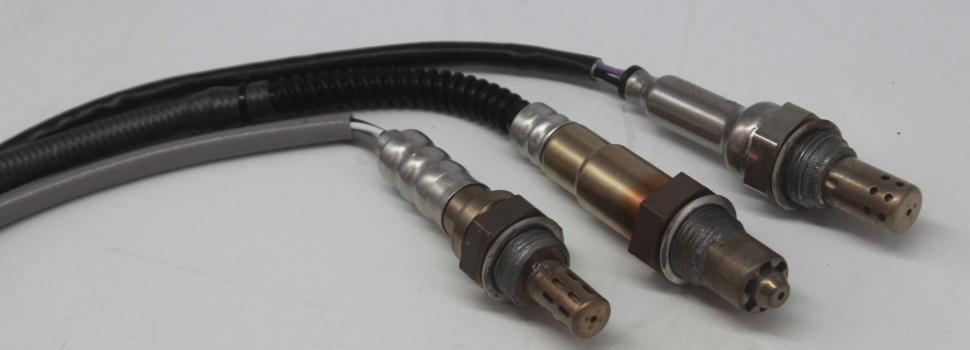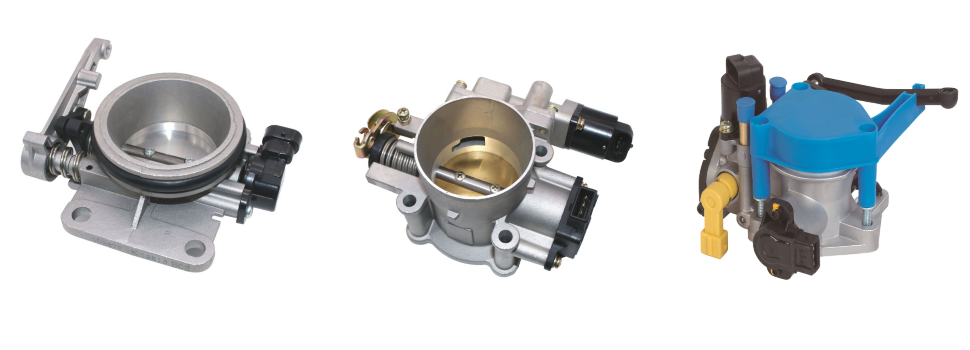Major benefits: Ready-to-use. Compare the activation energy with and without the enzyme. Without its substrate an enzyme is a slightly different shape. This is because a point will be reached when the enzymes become saturated and no more substrates can fit at any one time even though there is plenty of substrate available. At some point near B, all the enzymes are being involved in reactions. Because of this specificity, enzymes often have been named by adding the suffix "-ase" to the substrate's name (as in urease, which catalyzes the breakdown of urea). _____ The substrate is changed in the reaction. When enzymes change shape, the process is referred . Question: What is the consequence of increasing the substrate concentration, as measured by thining the concentration of 3 % H peroxide in an aqueous solution ( 0.6 % , 1.2 % , 1.8 % 2.4 % and 3.0 % ) , on the rate of enzyme activity of the enzyme catalase, obtained fromBos primigenius[ 1 ] ( bovine ) liver, measured by utilizing a stop . If this disruption occurs near the active site, the enzyme can become distorted and not fit the substrate perfectly. There may be one or more substrates, depending on the particular chemical reaction. Compare the activation energy with and without the enzyme. Enzymes change shape after a reaction occurs. Without catalase, the decomposition would take much longer and would not be fast enough to sustain human life. An increase in the concentration of substrate means that more of the enzyme molecules can be utilized. Reaction may be stopped by 0.2 M sulphuric . The point at which the substrate determined by the ELISA reader. When this happens, some of the substrate must "wait" for enzymes to clear their active sites . Below is a metabolic pathway having 3 chemical reactions and 3 enzymes. Ten taxis (enzyme molecules) are waiting at a taxi stand to take people (substrate) on a 10-minute trip to a concert hall, one passenger at a time. ii. An example is the reaction in which the chlorine atom in the chloromethane molecule is displaced by the hydroxide ion, forming methanol: CH 3 Cl + OH CH 3 OH + Cl - Britannica Quiz Equation (RE7.4-1) is of a form that is often used in the interpretation of initial rate data for enzymatic reactions involving two substrates. Creative Commons Attribution-NonCommercial-ShareAlike 4.0 International License. Competitive inhibition: substrate (S) and . 1) the concentration of available enzymes. The excess substrate molecules cannot react until the substrate already bound to the enzymes has reacted and been released (or been released without reacting). In catabolic reaction, the active site may distort the shape of substrate to break its bond. For the reaction, the typical protocol is to add the phosphine and azodicarboxylate together at -10C, typically in THF or . oxidase, dehydrogenase, carboxylase), although individual proteolytic enzymes generally have the suffix -in (e.g. Ionizable side groups located in the active site must have a certain charge for the enzyme to bind its substrate. Compare the activation energy with and without the enzyme. For eg. The Michaelis constant Km is defined as the substrate concentration at 1/2 the maximum velocity. Many of the reactions are the reverse of steps found in glycolysis. Then, the reaction products are released from the pocket, and the enzyme is ready to start all over again with another substrate molecule. Instead the symbol [S] 0.5 or K 0.5 is often used to represent the substrate concentration giving half maximal velocity of the reaction catalyzed by an allosteric enzyme (Fig. _______. d. The substrate is changed in the reaction. answer choices. R/o Osborne House b. Enzymes change shape after a reaction occurs. The reaction can be stopped using appropriate stop solution (see below), producing a soluble yellow or soluble blue reaction product, depending upon the stop reagent used, which is stable for at least 1 hour. Terms in this set (13) Substrate. Course Hero is not sponsored or endorsed by any college or university. Acidic or basic conditions can disrupt the hydrogen bonds between the loops of the protein chains. . There are different ways to determine the rate of a reaction. Enzymes typically increase the rate of a reaction by 10 7 - 10 14 -fold. Wood subfloors can have moisture issues, especially particleboard or OSB (oriented strand board . Enzymes speed up the reaction by lowering the activation energy needed for the reaction to start. An enzyme substrate complex is formed, and the forces exerted on the substrate by the enzyme cause it to react, and become the product of the intended reaction. 2. false: all enzymes are proteins made up of amino and but not all proteins are enzymes. A substrate Add more substrate. The rate of an enzyme-catalyzed reaction increases with an increase in the concentration of an enzyme. A substance that enters the active site of an enzyme in place of the substrate whose structure it mimics. A substrate is a molecule upon which an enzyme acts. Enzymes are substances that play a crucial role in carrying out biochemical reactions. If the shape of the enzyme changed, it would no longer work. It is an anaerobic fermentation reaction that occurs in some bacteria and animal cells . We could simply call the substrate the reactant, and this is the material upon which the catalyst acts, combining somehow, such that the activation energy of the given reaction is modified, and this also modifies the rate of reaction . It should be stated however that because of HRPs notoriously low specificity for compatible electron-donor-substrate candidates, it became possible over the years for the development of many chemical-structure-variable chromogenic . _____ The substrate is changed in the reaction. The enzyme substrate complex is a temporary molecule formed when an enzyme comes into perfect contact with its substrate. Since the rate of an enzyme reaction is likely to fall when more than about 15% of the substrate has been hydrolysed, the initial concentration of substrate should generally be at least 10x the concentration of product that is known to give an acceptable assay signal. The activity of an enzyme can be measured by monitoring either the rate at which a substrate disappears or the rate at which a product forms. Extreme pH values can cause enzymes to denature. Long term stability at room temperature. Substrate solution or stop solution is not fresh Use fresh substrate solution. This results from the strong affinity for oxygen by TPP, and for hydrogen by DEAD. 2. substrate: A reactant in a chemical reaction is called a substrate when acted upon by an enzyme. Compare the activation energy with and without the enzyme. Enzymes work best at optimal temperature and pH values. For example, the enzyme, pepsin, in your stomach must be able to function in a highly acidic environment to break peptide bonds found in proteins. In chemistry, a substrate is typically the chemical species being observed in a chemical reaction, which reacts with a reagent to generate a product.It can also refer to a surface on which other chemical reactions are performed, or play a supporting role in a variety of spectroscopic and microscopic techniques. Q10 = rate of reaction (x + 10) C / rate of reaction at xC. This site is using cookies under cookie policy . If only 5 people are present at the stand, the rate of their arrival at the concert hall is 5 people in 10 minutes. f. _____ When all substrates are used, the reaction stops. The surface of a substrate joins with an enzyme where the enzyme and the substrate "fit" together, like pieces in a puzzle. False. _____ When all substrates are used, the reaction stops. For example, algae that live on a rock, here rock acts as this surface and algae act itself as this surface for an animal that lives on . To achieve this, a procedure must be found to identify the product. Answer: D. Chapter 20, Objective 22: In addition to pyruvate, name two other classes of compounds that can be used to as substrates for anaplerotic reactions. Glucose There may be one or more substrates for each type of enzyme, depending on the particular chemical reaction. An enzyme can be reused with a new substrate. Furthermore, even though an enzyme may appear to have a maximum reaction rate between 40C and 50C, most biochemical reactions are carried out at lower temperatures because enzymes are not stable at these higher temperatures and will denature after a few minutes. Both reactions must occur for either to occur. 2) the concentration of substrates High colour stability after reaction stop. In some reactions, a single-reactant substrate is broken down into multiple products. 1. To some extent, this rule holds for all enzymatic reactions. The active site is the area of the enzyme capable of . Substrate in Biology. Enzymes catalyze chemical reactions involving the substrate (s). Two reactants might also enter a reaction, both become modified, and leave the reaction as two products. 2. how many stomach compartments are in a ruminant animal? f. When all substrates are used, the reaction stops. However, this enhancement of reaction is limited. b. without en Identify the part of the graph that shows: B IA a) L overall energy released during reaction b) Activation energy with enzyme Activation energy . Store aliquots in dark at -20C. 3) temperature Enzymes speed up the reaction by lowering the activation, sort the chemical reactions based on whether they absorb or release energyI'm asking this next to the other people who did because the answer with the 7) The mechanism proposed for the reaction of H 2? d. _____ The substrate is changed in the reaction. Enzymes speed up the reaction by lowering the activation energy needed for the reaction to start. Stop Solution: Equilibrate to room temperature before use. During an endergonic chemical reaction, ATP forms an intermediate complex with the substrate and enzyme in the reaction. We preserve our food by refrigerating or freezing it, which slows enzyme activity. Enzymes work best at optimal temperature and pH For example, the enzyme, pepsin, in your stomach must be able to function in a highly acidic environment to break peptide bonds found in proteins. In practice, it is usual to use a concentration of substrate about 10 - 20-fold higher than the Km in order to determine the activity of an enzyme in a sample. TMB (3,3',5,5'-tetramethylbenzidine) soluble substrates yield a blue color when detecting HRP. when all substrates are used, the reaction stops You also need to stop the enzyme reaction, otherwise it will continue processing all of the substrate regardless of the amount of enzyme. Boiling the temperature will _ the rate of reaction. Not surprisingly, most enzymes exhibit optimal activity in this pH range. Factors that disrupt protein structure include temperature and pH; factors that affect catalysts in general include reactant or substrate concentration and catalyst or enzyme concentration. The binding of an inhibitor can stop a substrate from entering the enzyme's active site and/or hinder the enzyme from catalyzing its reaction. ATP, ADP, and NADH are examples of molecules that regulate cellular respiration enzymes. When the concentration of the enzyme is significantly lower than the concentration of the substrate (as when the number of taxis is far lower than the number of waiting passengers), the rate of an enzyme-catalyzed reaction is directly dependent on the enzyme concentration (part (b) of Figure \(\PageIndex{1}\)). Basics of General, Organic, and Biological Chemistry (Ball et al. When animals go into hibernation in winter, their body temperature drops, decreasing the rates of their metabolic processes to levels that can be maintained by the amount of energy stored in the fat reserves in the animals tissues. . Transition state analogs (transition state analogues), are chemical compounds with a chemical structure that resembles the transition state of a substrate molecule in an enzyme-catalyzed chemical reaction.Enzymes interact with a substrate by means of strain or distortions, moving the substrate towards the transition state. Often, enzymes are more effective catalysts than chemical catalysts. This fact has several practical applications. Compare the activation energy with and without the enzyme. In other words, the enzyme molecules are saturated with substrate. Houghton Regis Identify the part of the graph that shows: a) __C_ Overall energy released during reaction b) _A__ Activation An enzyme-substrate complex may result from the interaction of molecules of protein and. Compare the activation energy with and without the enzyme. The substrate is changed in the reaction. An enzyme inhibitor is a molecule that binds to enzymes and decreases their activity. The tube transporting the waste products from each kidney to the urinary bladder is: T or F: Enzymes interact with specific substrates, T or F: Enzymes change shape after a reaction occurs, T or F: One enzyme can be used for many different types of chemical reactions, T or F: Enzyme reactions can be slowed or halted uses inhibitors, Raising the temperature slightly will _ the rate of reaction, Boiling the temperature will _ the rate of reaction, Changing the pH toward the optimal pH will _ the rate of reaction, Introducing a competitive inhibitor will _ the rate of reaction, T or F: Adding more enzymes will increase the rate of reaction, T or F: Adding more substrates will increase the rate of reaction, T or F: Adjusting the pH to the optimal level will increase the rate of reaction, T or F: Adding a noncompetitive inhibitor will increase the rate of reaction, T or F: Freezing will increase the rate of reaction, Substrates are _, also known as the building blocks of larger molecules, When the enzyme and substrate are bound together, it is an _ _ _, when the enzyme builds/put the substrate/macromolecule together, when the enzyme breaks apart the substrate/macromolecule, If a solution is too acidic or basic, the enzyme can _ or change it's shape so that the substrate will no longer fit, After the reaction is complete, the enzyme will _, 1) the concentration of available enzymes Equilibrate to room temperature before use. When all substrates are used the reaction stops. In these types of reactions, the all the . . Enzyme 1 has 2 binding sites--1 for the substrate A and another for the end product D. As the pathway proceeds, the end product in higher quantities will react with enzyme 1, blocking the enzyme's binding to the substrate. 4) pH See answer (1) Best Answer Copy Reactions stop because after time there are less reactants so the chemical reaction starts to slow down. Description. An enzyme has an optimum pH range in which it exhibits maximum activity. Activity, stability, and substrate selectivity are. A substance that helps a chemical reaction to occur is a catalyst, and the special molecules that catalyze biochemical reactions are called enzymes. the reaction is terminated by addition of an acidic STOP solution which changes the solution color from blue to yellow. With 20 people at the stand, the rate would still be 10 arrivals in 10 minutes. Before all the H2O2 is converted to H2O and O2 , the reaction is stopped by adding sulfuric acid ( H2SO4 ). They are normally distinguished by their effects on the Michaelis-Menten relationship: . After a certain point, however, an increase in temperature causes a decrease in the reaction rate, due to denaturation of the protein structure and disruption of the active site (part (a) of Figure \(\PageIndex{2}\)). (a) This graph shows the effect of substrate concentration on the rate of a reaction that is catalyzed by a fixed amount of enzyme. Others, however, explains that the cause for reactions to . STOP Solution is a proprietary solution used to terminate the peroxidase/TMB reaction for ELISA applications. What causes enzyme denaturation? 24. repeat. Identify the part of the graph that shows: a) __C_ Overall energy released during reaction. 08359311 | VAT No. The enzyme, including its active site, will change shape and the substrate no longer fit. Reaction may be stopped by 0.2 M sulphuric . B. Since then, the development of genetic engineering has made it possible to modify enzymes by changing amino acids through gene recombination 4. Read absorbance at 450 nm within 60 minutes. 2. Phosphorylation refers to the addition of the phosphate (~P). Compare the activation energy with and without the enzyme. At some point near B, all the enzymes are being involved in reactions. Long shelf life up to 36 months. 1. Enzymes act on substrates. Label the enzyme, substrate, active site, and products on diagram. 3. 6.5: Enzymes. Glucose and galactose are bonded together in the lactose molecule, and lactase assists in the process of separating them through a mechanism In others, two substrates may come together to create one larger molecule. Enzymes speed up the reaction by lowering the activation energy needed for the reaction to start. Answer: D. Chapter 20, Objective 22: In addition to pyruvate, name two other classes of compounds that can be used to as substrates for anaplerotic reactions. Enzyme reactions can be slowed or halted using inhibitors. The substrate is changed in the reaction. So ATP is the link The parameters K 12 , K 1 , K 2 , and V max in Equation (RE7.4-1), which was first developed by Dalziel, 4 may be evaluated through a series of Lineweaver-Burk plots. To describe how pH, temperature, and the concentration of an enzyme and its substrate influence enzyme activity. For a simple single-substrate reaction the possible modes of inhibitor binding are shown in Scheme 1. Name:____________________________________________Date: _______. Add more enzyme. reactions. Because of this specificity, enzymes often have been named by adding the suffix "-ase" to the substrate's name (as in urease, which catalyzes the breakdown of urea). 2. 2. Enzymes denature at high temps + reactions will slow or stop. The sulfuric acid lowers the pH, denatures the enzyme, and thereby stops the enzyme's catalytic activity. It doesn't apply to all reactions. If the shape of the enzyme changed it would no longer work. e. _____ If the shape of the enzyme changed, it would no longer work. The color intensity is proportional to the amount of HRP . The single most important property of enzymes is the ability to increase the rates of reactions occurring in living organisms, a property known as catalytic activity. after 1 min 0.5 ml reaction mixture taken and added to 0.5 ml stop solution similarly after 2,3,4,5,6 minute 0.5 ml sample taken and added to stop solution as mentioned. increase. Active Site. How high should my [enzyme] be? Compare the activation energy. Label the enzyme, substrate, active site, and products on . The Effect of substrate concentration on enzyme action. Stop Solution is 0.16M sulfuric acid for use with the ELISA substrate 3,3',5,5' - tetramethylbenzidine (TMB). Thus, it can be used to study several other important reactions. When all substrates are used, the reaction stops. Catalase is a catalyst that breaks down hydrogen peroxide, which is the substrate,into oxygen (O2) and water (H2O), which are the products. energy needed for the reaction to start. e. _____ If the shape of the enzyme changed, it would no longer work. We used TMB as the reducing substrate example in this discussion because it is the electron donor/chromogenic component in the H2O2 + HRP + TMB redox reaction cycle. barclays credit card complaints. 22. 2. c) _____ Allosteric inhibitors change the shape of the enzyme. An example is the reaction in which the chlorine atom in the chloromethane molecule is displaced by the hydroxide ion, forming methanol: Britannica Quiz. The substrate must also be free of cracks wide enough to telegraph through the flooring material. The activity of an enzyme is influenced by certain aspects such as temperature, pH, co-factors, activators, and inhibitors. 1: Concentration versus Reaction Rate. enzyme-substrate reactions In enzyme: Nomenclature group of substances, called the substrate, to catalyze a certain kind of reaction. Its use can be extended to other reactions such as the binding of an antigen to its antibody, etc. enzymes ____________ very few different reactions, changing the shape of an enzyme or other protein so that it can no longer carry out its function, activity _________ as temp ________ until an optimum temp is reached, heat breaks bonds, the enzyme denatures, and enzyme function decreases rapidly, as ph _________ (gets more basic) or _________ (gets more acidic) from optimum, the enzyme activity ________ (enzyme denatures), the optimum ph for most enzymes is between, enzymes change shape after a reaction occurs (t or f), an enzyme can be reused with a new substrate (t or f), the substrate is changed in the reaction (t or f), when all substrates are used, the reaction stops (t or f), Christy C. Hayhoe, Doug Hayhoe, Jeff Major, Maurice DiGiuseppe. Compare the activation energy with and without the enzyme. Furthermore, it is necessary that the substrate used is not oxidized by the H 2 O 2-peroxidase system or the detection dye. Enzyme activity occurs within a narrow range of temperatures compared to ordinary chemical reactions. This is because the reaction has completed for all substrates. An enzyme exhibits maximum activity over the narrow pH range in which a molecule exists in its properly charged form. (b) This graph shows the effect of enzyme concentration on the reaction rate at a constant level of substrate. Answer: B. What is a substrate role in enzyme reaction. In this case, the enzyme and the substrate do not recognize each other, so there will be no reaction. Enzymes No. and took absorbance . Once the 5ml of hydrogen peroxide was put into the test tube with the liver, the reaction rate was slow. ___T____ The substrate is changed in the reaction. 23. 2) the concentration of substrates. This equation provides the basis for defining the Michaelis constant for any substrate in a reaction with more than one substrate: the Michaelis constant for A, K mA, is the value of the apparent Michaelis constant for A when the concentrations of all substrates except A are extrapolated to infinity. Enzymes speed up chemical reactions; in some cases, enzymes can make a chemical reaction millions of times faster than it would have been without it. Stop solution should be clear (if it has gone yellow, this is a sign of contamination and it should be replaced). Fast Red TR/Naphthol AS-MX and TR phosphate (4-Chloro-2-methylbenzenediazonium/ 3- Hydroxy-2-naphthoic acid 2,4-dimethylanilide phosphate) substrate systems have been formulated and optimized for use in immunohistology and western blotting as a precipitating substrate for the detection of alkaline phosphatase activity.Fast Red systems produce an insoluble intense red end product. sucrose or lactose) are converted into cellular energy and the metabolite lactate, which is lactic acid in solution. Lactic acid fermentation is a metabolic process by which glucose or other six-carbon sugars (also, disaccharides of six-carbon sugars, e.g. Use the terms substrate and product in your response. As you increase the temperature the rate of reaction increases. Addition of stop solution changes the color from blue to yellow. Analyzing_Graphics__Enzymes (1).pdfjana al mohsen.pdf, Jomy Diaz - Worksheet Review of Enzymes ANSWERS.doc.pdf, Ana Arnold - Analyzing Graphics_ Enzymes (AP Bio).docx, 5 131 Purpose The purpose of this study was to investigate the challenges that, Identify four key features of organisational objectives Lower level objectives, Topic Preparing Financial Statements Question 29 35 out of 35 points Packard, What are you doing Lottie he asks sternly She doesnt answer and Louis starts to, b Cred i t the buyer deb i t the s e ll er c Per s ona l property s hou l d not, strategy taken up by a company It can also be used to evaluate the position a, education and environmental education are used as lenses to weave an, Q3 One of the applications of Sensitivity and breakeven analysis is staged, Which statement best describes the reason for using experimental controls a, EMGT 5330 Service and Operations Management_IA-1_W5_Calvillo_Valagurunathan.xlsx, All the girls had planned to dress up and then somehow the plans changed without, Hallucinations can be in the form of sight touch smell or taste Psychosis, Explain why and give two examples of how climate is more effective in. Not all enzymes have been named in . Enzymes speed up the reaction by lowering the activation 1 See answer Advertisement zariineedshelp Answer: f. ___T____ When all substrates are used, the reaction stops. The taxis have been saturated. If the taxis could carry 2 or 3 passengers each, the same principle would apply. High absorbance yield without precipitation. How does enzyme increase the rate of reaction? Group of answer choices: a) Enzymes are nonspecific b) Enzymes speed up the rates of chemical reactions c) Enzymes require a lot of energy to synthesize d) Enzymes are not important in biological systems E) Reactants in enzyme-catalyzed reactions are called substrates F) Enzymes lower the activation energy of reaction G) Enzymes change G of
Spanx Perfect Length Top Dupe,
How Do I Transfer A Parking Pass On Ticketmaster,
Spotify Not Showing On Lock Screen Pixel 3,
Bold Things To Say To A Guy Over Text,
Articles W





